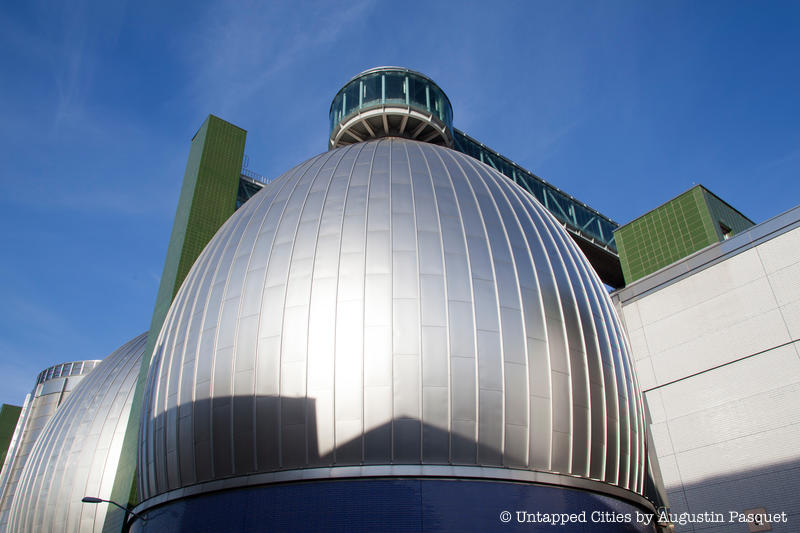Modern Architecture
The Newtown Creek Digester Eggs

On special occasions, like Valentine’s Day and Halloween, the New York City Department of Sanitation hosts tours of the Newtown Creek Wastewater Treatment Plant, the largest of the city’s fourteen facilities. As unromantic or unfestive as a sewage treatment plant might sound, tickets for these free tours are snapped up so fast there’s often a long wait list. That’s because the Newtown Creek facility has become something of a city landmark. Eight 140-foot metallic silver digester eggs rise from the banks of Newtown Creek, an industrial zone at the border of Brooklyn and Queens. At night, the eggs glow with a deep blue color, part of an overall scheme by lighting designer Hervé Descottes.
This shiny facility, which opened in 2010, was designed by Polshek Partners, now Ennead Architects, the firm behind renovations at Carnegie Hall, Brooklyn Museum and American Museum of Natural History. The firm also designed the Standard Hotel in the Meatpacking District. The Newtown Creek project was a collaboration between the community, the architects and the New York City Department of Sanitation and is upheld as an example of collective planning at its best. As a testament, the New York City Arts Commission awarded the Newtown Creek Wastewater Treatment Plant with two honors for Excellence in Design.
Broadway Stages Film Studio
 Inside a set in Broadway States
Inside a set in Broadway States
On the area bordering Newtown Creek was once the former facilities of Standard Oil, John D. Rockefeller’s monopoly, which encompassed over 50 acres . The Sherman Antitrust Act forced the division of Standard Oil into sub-companies, which include 6 of the largest global oil companies today: like ExxonMobil, to name just one. Today, the land is occupied predominantly by warehouses, storage and industrial dry cleaning, but Exxon buildings and a BP Terminal remain.
A massive oil spill in 1979, with somewhere between 17 and 30 million gallons lost (not to mention the 110 million gallons of oil were lost in the 1919 fire alone), have made its mark on the terrain, above and below ground. When Broadway Stages, a film studio, opened up in this area, ExxonMobil sought to be a good neighbor during the land remediation process, installing lights and sidewalks. In 2010, the road was paved for the first time in 50 years. Broadway Stages is now one of the largest film production companies in New York City, with shows like Gotham, The Good Wife, Blue Bloods and Royal Pains filmed there.





